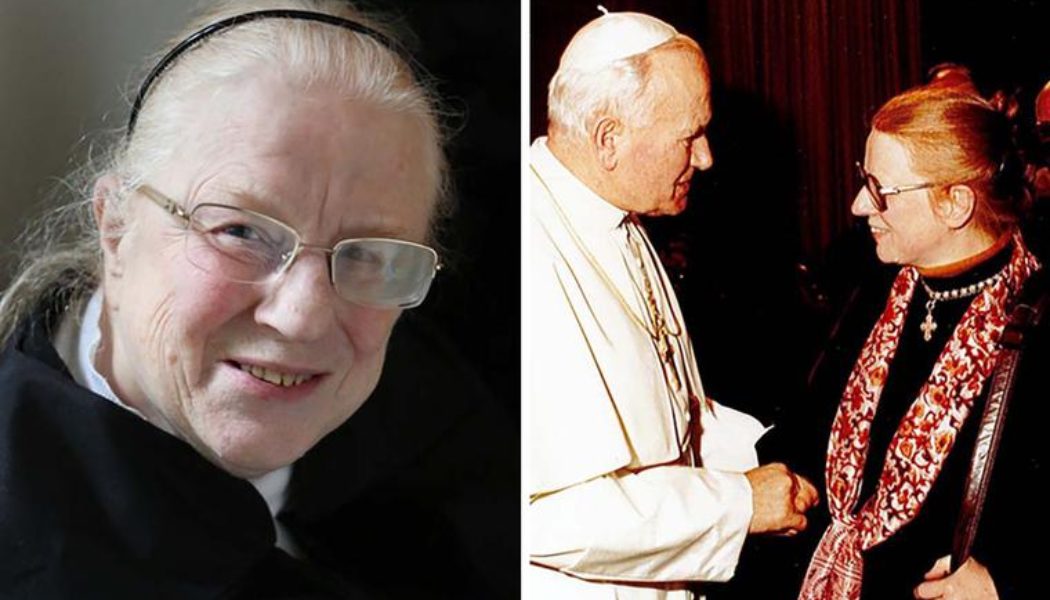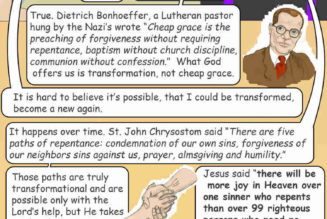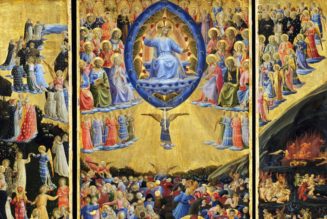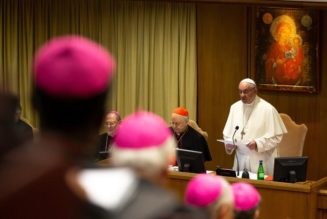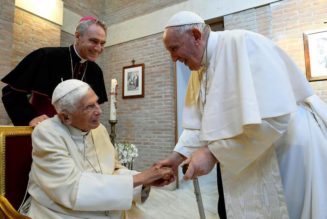
The consecrated virgin Dagny Kjaergaard is one of those figures whose influence over the Church is hidden but pervasive. Now that she has departed this life, this fact is sure to be recognized more and more.
The precise authorship of each part of the Catechism of the Catholic Church is a closely guarded secret and Dr. Kjaergaard honored that to her grave. This did not, however, prevent a degree of detective work on the part of her friends and colleagues and students which revealed the decisive and extensive role she played in this monument of John Paul II’s pontificate.
The Catechism itself proclaims that it was “prepared following the Second Vatican Ecumenical Council.” It was intended to restore doctrinal certainty to the faithful, by demonstrating that the teaching of the Church remains complete and unbroken from Pentecost through all 21 ecumenical councils and beyond.
In a sense, the Catechism was a deliberately naïve project. It refused to view Vatican II as a revolution and saw it instead as an ecumenical council of the church. Such a project required the influence of someone with a like purity of vision and intention. Cometh the hour, cometh the woman.
The Conversion of Dagny Kjaergaard
Dagny Kjaergaard was born in 1933 in Greifswald, Germany, to a Danish Lutheran father and a lapsed Catholic German mother. Her family left Germany and returned to Denmark as the full horror of the Nazi regime became apparent. Dagny was thus still only 7 years old when Germany occupied Demark in April 1940.
Even then, Dagny was an Anglophile, with no doubt as to which side she supported in the War. The present writer was astounded one evening to hear her boom out from memory all the verses of Rule Britannia (not easy to sing let alone memorize) and she recalled proudly that she had walked up to a German soldier in Denmark as a little girl and sung it at him. Fortunately for posterity he was so taken aback he did nothing.
For all her zeal for the Allies, after the war Dagny’s parents were concerned that her half-German status might be a problem at school and so they resolved to send her to a private Catholic school. The Lutheranism of her family was sufficiently nominal that she hadn’t even been baptized, but this was a requirement of the new school and so, albeit at the hands of a Protestant minister, she was reborn in Christ and sent to her new school as a new creation.
This experience would be utterly transformative for her, above all because of the encounter with Our Lord in the Blessed Sacrament. The key moment came one day when she was attending Solemn Exposition and she asked one of the sisters, “What is that?”
The sister replied, ‘It is Jesus, and he loves you.”
Those who have seen her receive Communion, or venerate the relic of the True Cross or of St. Thomas Aquinas, can testify to the ferocity of the love that burned within her for Christ and his saints.
Quickly thereafter she asked to be received into the Church but met with parental opposition. She was, however, scheduled to be confirmed as a Lutheran and she informed her parents that when she was asked in the ceremony if she adhered to Lutheran doctrine she would reply ‘No!’ as loudly as she could. Her horrified parents gave way and she was allowed to become a Catholic. Before she had even been formally received, Dagny visited Lourdes and privately consecrated herself as a virgin at the age of just 14.
A Vocation Delayed
Not long after this, Dagny entered the Order of Carmel Discalced in Belgium and proceeded to solemn vows. In 1965 she was sent with a group of sisters to found a house in Sweden. But then, the terrible turbulence of the post-conciliar years came upon them. Like so many religious Dagny struggled to reconcile the rule and charism to which she had sworn herself with the arbitrary novelties she was commanded to embrace, supposedly in the name of the Council.
Her mental balance was disrupted and she suffered a breakdown, being sent out of the Carmel for treatment. While she made a full recovery, she was told that a relapse was inevitable if she returned to the convent and she was dispensed from her vows. At something of a loose end Dagny devoted herself to missionary activity and to the study of theology, first in Belgium then in Fribourg and finally in Rome at the Angelicum, where she completed her Doctorate in Sacred Theology.
All this while Dagny remained faithful to the vow she made in Lourdes back in 1947, but having been compelled to leave the Carmel she was keen to reassert her state of life canonically. Providentially, in 1970, Paul VI had restored the ancient form of consecration of a Virgin living in the world and so this form life was once more available. Dagny inquired with her bishop back home whether this would be possible. Unfortunately, he was a devotee of the “spirit of the council” and replied that he thought this a very old-fashioned idea.
Not long after, the crestfallen Dane found herself on a Roman bus a few seats behind Cardinal Joseph Ratzinger, the prefect of the Congregation for the Doctrine of the Faith. She followed the cardinal off the bus, introduced herself and asked if she could tell him her woes. The upshot was that an alarmed Scandinavian bishop received a letter from the prefect asking him why he thought the idea of consecrated virginity old-fashioned and whether he would be willing to allow the cardinal himself to consecrate Dr. Kjaergaard. Embarrassed permission was rapidly granted, and Dagny was consecrated on March 25, 1989, at the abbey where Cardinal Ratzinger made his annual retreat.
The Catechism of the Catholic Church
It was from this relationship, and from an acquaintance formed in Fribourg with Christoph Schönborn (later Archbishop of Vienna), that Dagny became involved in the drafting of the Catechism of the Catholic Church.
Although she maintained secrecy about the authorship of the various parts of the text, she would tell anecdotes over dinner with the names and numbers removed. A little bit of jigsaw identification by her friends sometimes made it possible to fill in the gaps. Her hand is everywhere.
The draft of a very important section arrived one day in Rome and Dagny was horrified at what she read. She stayed up long in fervent prayer and went to see Ratzinger in his office the following day.
“What did you think?” he asked. She hesitated and he encouraged her to respond.
“This is not the religion to which I converted,” she replied.
“What a relief.” He smiled and dropped the text in the bin. “Let’s hear no more about it.”
A Dominican former professor of Dagny’s was drafted in to write a new version. Once, years later, a complaint was passed on to her that the Catechism says too little about the mystery of predestination. The problem essentially is that Pope Paul V at the beginning of the 17th century dropped the ball on the topic, fearing to offend whichever order lost the controversy, and so it’s hard to explain without going into immense detail as to the various tolerated positions — hardly appropriate in a Catechism. Dagny read intensively around the debates for some weeks and then woke up suddenly in the middle of the night and sat bolt upright.
“The Dominicans are right!” she exclaimed.
Mentor, Guardian, Friend
This reflected the special grace she was given for her work and which, it seems, persisted afterward. When the Catechism was completed, Dagny took up a position as a professor at the International Theological Institute in Austria founded by John Paul II in 1996.
She was deeply loved, and her nose for heresy was much appreciated by the students. She lived the last years of her life, like a sociable medieval anchorite, in a tower of the castle where the Institute was based. A student who used to help her clean her room recalls her books were arranged in concentric circles of declining orthodoxy, with Scripture and St. Thomas on her desk and the most dubious theologians at the furthest extremities of the apartment.
Whenever a visiting lecturer came, she would sit at the front of the audience and lean on her stick, listening intently. If the speaker began to show signs of straying from orthodoxy her brow would furrow, and the students’ interest would begin to drift from the lecturer to the tell-tale signs of disapprobation in Dr. Kjaergaard. Dagny herself was oblivious to this as she was entirely absorbed in the lecture.
If at any point it strayed from suspicious obscurity to outright heresy, Dagny would erupt, banging her stick on the floor and shouting “No!” It was never clear if she even knew she had done this, but it was very disconcerting for the speaker. The students loved it.
A colleague of Dagny’s once visited Rome and came upon Cardinal Ratzinger saying Mass. He spoke with him briefly afterward and passed on the greetings of Dagny Kjaergaard. Ratzinger looked almost frightened and said, “Ah yes! The Thomist.”
As she grew older she needed a lot of care, which was lavishly provided by the students and by the family of Father Jurai Terek, the chaplain of the Institute. She died in Vienna after a short illness and was attended by Father Terek and buried after a funeral liturgy in the Byzantine Rite, which she loved, behind the parish church of Trumau where the Institute now resides. The eulogy was given by her dear friend, Msgr. Larry Hogan.
A German friend who was to visit the Institute once asked me about the appearance of the legendary Dr. Kjaergaard and I told her to imagine a fearsome old matriarch in a Norse village in the age of the Vikings. The menfolk have left to raid some innocent Anglo-Saxon monastery or village and she is firmly planted on a three-legged stool on the steep hillside going down to the sea, leaning on her stick, her eyes fixed grimly on the horizon to see if the men will ever return. When she reached Trumau my friend recognized Dagny by sight immediately without having to be told. Dagny often said that the Danes would never truly be converted until they stopped being proud of the Vikings. A twinkle in her eye implied she understood the struggle.
Dagny struggled not theoretically but emotionally with the doctrine of the resurrection of the body. The years had impressed upon her the doctrine of Scripture that the “perishable body weighs down the soul” and she could not imagine it being a joy to receive it back again at the end of time.
This problem was solved for her, she explained, by Benedict XVI. She said his demeanor and facial expressions were so suffused with charity that looking at him she was able to begin to understand how a body could be raised in glory.
She would have gruffly dismissed the idea that her own hearty and loving manner might have provided the same service for those who knew her so no one would have dared tell her, but it is true. May she rest in peace.
Join Our Telegram Group : Salvation & Prosperity
